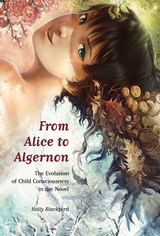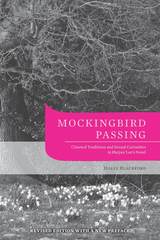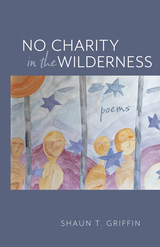
By examining the connection between authors and trends in child psychology, author Holly Blackford explains why many modern novels began to focus on child cognition as a site for intellectual and artistic exploration. In each chapter of this book, select novels of the late-nineteenth or twentieth century are paired with a specific moment or movement from the history of developmental psychology. Novels such as Mark Twain’s Huckleberry Finn and Henry James’s What Maisie Knew, or Radclyffe Hall’s less-canonical The Well of Loneliness and even Mark Haddon’s The Curious Incident of the Dog in the Night-Time, showcase major questions about human epistemology through their child characters. From Lewis Carroll’s Alice and her looking-glass to Richard Wright’s Bigger Thomas and the murder of Mary Dalton to the chaotic Neverland—symbolizing the unmappable child’s brain—a literary tradition of child consciousness has emerged as an experimental site for the unstable concepts of evolution, civilization, and development.
By situating literature about children within concurrent psychological discourses, Blackford demonstrates how the modern novel contributed to the world’s understanding of the boundless wonders and discernible limits of child consciousness.

How often does a novel earn its author both the Presidential Medal of Freedom, awarded to Harper Lee by George W. Bush in 2007, and a spot on a list of “100 best gay and lesbian novels”? Clearly, To Kill a Mockingbird, Lee’s Pulitzer Prize–winning tale of race relations and coming of age in Depression-era Alabama, means many different things to many different people. In Mockingbird Passing, Holly Blackford invites the reader to view Lee’s beloved novel in parallel with works by other iconic American writers—from Emerson, Whitman, Stowe, and Twain to James, Wharton, McCullers, Capote, and others. In the process, she locates the book amid contesting literary traditions while simultaneously exploring the rich ambiguities that define its characters.
Blackford finds the basis of Mockingbird’s broad appeal in its ability to embody the mainstream culture of romantics like Emerson and social reform writers like Stowe, even as alternative canons—southern gothic, deadpan humor, queer literatures, regional women’s novels—lurk in its subtexts. Central to her argument is the notion of “passing”: establishing an identity that conceals the inner self so that one can function within a closed social order. For example, the novel’s narrator, Scout, must suppress her natural tomboyishness to become a “lady.” Meanwhile, Scout’s father, Atticus Finch, must contend with competing demands of thoughtfulness, self-reliance, and masculinity that ultimately stunt his effectiveness within an unjust society. Blackford charts the identity dilemmas of other key characters—the mysterious Boo Radley, the young outsider Dill (modeled on Lee’s lifelong friend Truman Capote), the oppressed victim Tom Robinson—
in similarly intriguing ways. Queer characters cannot pass unless, like the narrator, Miss Maudie, and Cal, they split into the “modest double life.”
In uncovering To Kill a Mockingbird’s lively conversation with a diversity of nineteenth- and twentieth-century writers and tracing the equally diverse journeys of its characters, Blackford offers a myriad of fresh insights into why the novel has retained its appeal for so many readers for over fifty years. At once Victorian, modern, and postmodern, Mockingbird passes in many canons.
Holly Blackford, an associate professor of English at Rutgers University–Camden, has published extensively in the fields of American literature and children’s literature.
READERS
Browse our collection.
PUBLISHERS
See BiblioVault's publisher services.
STUDENT SERVICES
Files for college accessibility offices.
UChicago Accessibility Resources
home | accessibility | search | about | contact us
BiblioVault ® 2001 - 2024
The University of Chicago Press









